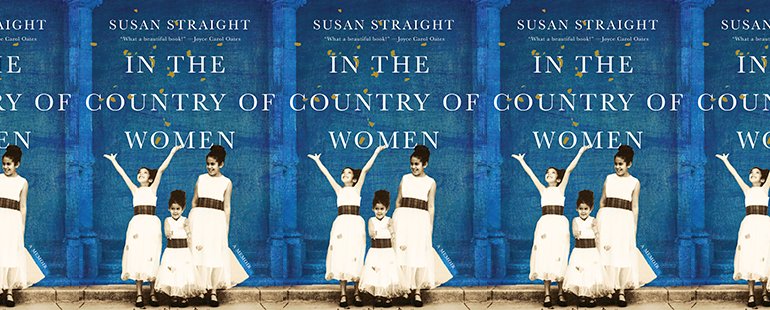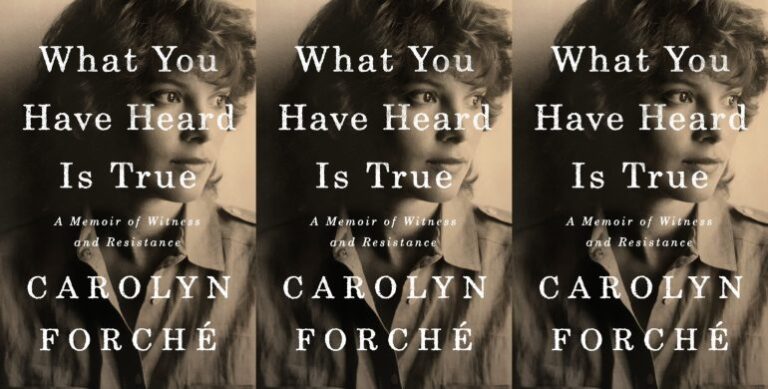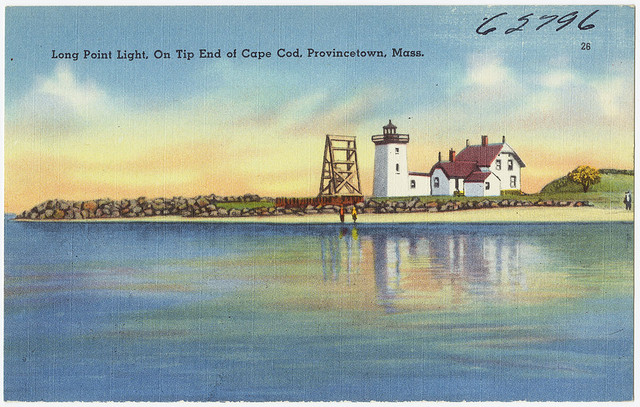“I am a wanderer”: An Interview with Susan Straight

Susan Straight is an accomplished author, with eight adult novels, one middle grade novel, and one book for young readers to her credit—and now a memoir. In the Country of Women, released earlier this year, is the intricate braiding of all things Straight. It is part family history, part memoir, part love letter to her daughters, part US history, part reading list, and partly a discussion of the amorphous concept of the heroine’s journey. Like its author, the book is never one thing; it rests on opposite ends of various spectrums simultaneously. It is heartwarming and heartbreaking, emboldening and educating, clear-eyed and nostalgic, scholarly and undemanding.
Following an atypical memoir structure, In the Country of Women chronicles the journeys of the two families that influenced the conception and upbringing of her daughters. Straight elucidates the miles the women of these families trekked before arriving at the point where she met her daughters’ father, Dwayne Sims, as well as all of the miles the families have travelled since. Riverside, California is their point of convergence, but the journeys begin in Switzerland, Canada, and the pre-Civil War South. For both the women of the Sims family—like Fine, Dwayne’s great-grandmother, and Daisy, his grandmother—and the women of Straight’s lineage—including Ruby, Straight’s paternal grandmother, and Rosa, her mother’s stepmother)—as well as of the women they ushered into the world after them, theirs are journeys that can only be described as American, in the best and worst uses of the word: full of hardships, violence, inner strength, and perseverance.
In the Country of Women, Straight’s debut nonfiction work, also lays bare the recurring real-life themes that she has been exploring throughout her extensive fiction-writing career. Known for crafting characters who live on the margins and are easily dismissed—like children and illegal immigrants (Highwire Moon), janitors (Aquaboogie), tow-truck drivers and cleaning ladies (The Gettin’ Place), grocery store clerks (The Friskative Dog), and sex workers (Between Heaven and Here)—Straight has consistently shown that no one is truly alone, and that where we exist affects who we are and how we are looked at.
Food is central to this exploration of the concept of family, and her characters are well acquainted with both satiation and hunger. Eating, to Straight, is a significant part of the construction of personal and family histories—what foods we eat, when we eat, and if we have gone hungry. She reminds us that food is a way we provide for our people. The California farming culture is part of the fabric of each of Straight’s works, which itself serves to argue that what we eat and where we live are not disparate facets of our lives; the same can be said for how a family has come to the US. “Place” is inextricably linked to the need to provide for loved ones.
I recently corresponded with Straight about the interplay of these themes—how journeys, history, lineage, place, and food intersect in life and in literature.
A.M. Larks: In the prologue to In the Country of Women, you write that “[w]omen don’t get the Heroine’s Journey” and that “[m]en are accorded the road and the sea and the asphalt. The monsters and battles and murders.” Why do you think this is? And do you think this is changing?
Susan Straight: Men who cross nations or oceans are called pioneers, wayfarers, wanderers, and explorers, or they are armies sent to conquer and settle. But what do we call women who cross thousands of miles in this nation, or others? My mother crossed the ocean with other migrants after World War II, with her little suitcase, and then ran away from her stepmother, in rural Canada, with her little suitcase. My father-in-law’s grandmother walked and rode trains from Tennessee to Texas to Tulsa; my mother-in-law’s mother went from Mississippi to Arkansas, Oklahoma to Texas, New Mexico to California. What do we call women who flee terrible murderous men, or stepmothers who want to marry them off to pig farmers? I think it’s changing now—but we still think of women as different when they migrate, and succeed.
AML: Your writing often features people—and families—that travel miles, but you were born in Riverside and you say that you stayed in Riverside, “which doesn’t feel very heroic.” It seems, though, that you have travelled miles through all of your stories, which leads me to wonder: does an odyssey always have to be a physical journey?
SS: That’s a great thing to think about! I love the odysseys which are stories themselves, the way the teller embroiders the tale, or leaves it bare, and the listener has to imagine the details. For example, the story of Fine, which is really the origin story of my memoir, was told by the woman herself, Fine Ely Hofford Rawlings Kemp, to her grandchildren, including my father-in-law, and her great-granddaughters, Karen and Teri. They passed the stories to my husband and me, and now I’ve tried to write them. The story of the bullet she threw at a woman, when she was nine, was full of her own spirit and anger when our Uncle John and cousins Teri and Karen recounted it, because her voice had miraculously and indelibly colored the story. So, the physical journey, for me, was to think of her while I was in Tennessee, where she was that child, and then to touch her gravestone in Tulsa, where she is buried.
AML: Tulsa is an important place in your memoir, with its connection to the Sims family, but it’s important to The Gettin Place, too, in which you bring up the Tulsa Riots of 1921. In fact, history plays an important role in all of your works, whether familial history or history of place—especially with regards to Rio Seco, the fictional setting of most of your books. Do you agree with the critic David L. Ulin that Californians have a hard time reckoning with our own history? That we like to romanticize, distance, or even erase it, even when seeming to confront it?
SS: Well, David is a good friend, but he’s from New York, so that makes me laugh a little, because the kind of California where I was born and where I live never has trouble reckoning with history. We walk about it all the time, endlessly, at every barbeque and party, where I still hear about the Greenwood Neighborhood, the area of Tulsa once known as the Black Wall Street of America. Our relatives had to flee the fires and shooting, and that’s part of our family history. But people talk to me of history every day, sitting on the porch. Recently my ex-husband, his older brother, and that brother’s friend sat on my porch for two hours, describing that friend’s house, built of castoff wood and stone from the historic Mission Inn, in Riverside. His grandfather, who immigrated from Ireland, built the small house where this friend grew up. Now, the friend is living itinerant, having been in trouble for years. But his voice, remembering the house, was so soft.
AML: Even though you have stayed in Riverside and have written mostly about a fictional town, your reading life has taken you many places. You recently wrote an essay called “There Riches Here,” which details your reading life in 737 novels, and which is accompanied by a story map that shows all the places your favorites have taken you. I can’t even imagine taking on such a task! What led to this undertaking and what did you find out about yourself as you worked on it?
SS: That’s a great question! I drive across the country every year, with my dog, sometimes with a daughter or two, from California to Canada, so I am a wanderer, too. I leave home and go to the home of my beloved stepfather, [in] Maritime Eastern Canada. And I’ve been reading since I was three—I read about 100 books of fiction every year. After the 2016 [election], I became obsessed with the idea that America is sure as hell not red and blue states, but this beautiful aggregate of places, landscapes, cities, and villages—and I thought of all my favorite [works of] regional fiction that took me to those places. I re-read hundreds of books to choose one book for each author that represented a specific place, even finding the address or river or town or farm or desert [in which the book was set], so ESRI, the global mapping company, could do GIS locations for the books. It was amazing, and I heard from people all over the world who loved it.
AML: In both fiction and nonfiction, you have written about the importance of food for your characters. I am thinking of The Gettin Place, where the Thompson family grows olives and other fruits, but also in Between Heaven and Here, where Victor subsists on ramen and take-out food from the neighborhood taqueria. What guides your focus about this basic need, and why do you experience the impetus to keep discussing where our food comes from?
SS: We grew up hungry sometimes, and so we are always talking about food! Our ancestors really had no food, for long periods, so they loved to describe food, plan food, and talk to us about food. My mother is from Switzerland, so her life was potatoes, and then mine was, too. My father-in-law and his siblings nearly starved after their father died—they lived on squirrels and rabbits that they shot themselves when they were children, so we talk about meat in a way that means substance and success.
AML: In In the Country of Women, you mention that James Baldwin, who was your professor at the University of Massachusetts Amherst, was a big influence on your reading and writing life. What about his work specifically spoke to you?
SS: I loved Go Tell It on the Mountain, which I read when I was eleven, not understanding the adult parts about violence as much as John, the young son. He has a father who hates him; my mother was not fond of me. I thought the interiority was spectacular, even before I understood it, the way dust motes floated in the air and he saw them and I saw them. Also, he had a little brother taken away by violence, and, years later, so did I.
AML: You also mention that Toni Morrison’s Sula was an influential work in your reading life, and I know that Baldwin also influenced Morrison’s work and that she edited the Library of America’s first two volumes of Baldwin’s fiction and essays: Early Novels & Stories (1998) and Collected Essays (1998). What do you think it is that connects these writers for you?
SS: I read Sula when I was eleven, too, and understood the scenes at a visceral level. Sula and Nel are two girls trying to survive a violent, vivid, incomprehensible world, and so were my friends and I trying to navigate being hunted by boys and men, being hurtled along through drugs and alcohol and nighttime journeys. But Toni Morrison’s use of imagery, and deep, deep landscape, was for me the continuation of those scenes in Baldwin. They went straight into my brain and soul, and have guided me for four decades.


